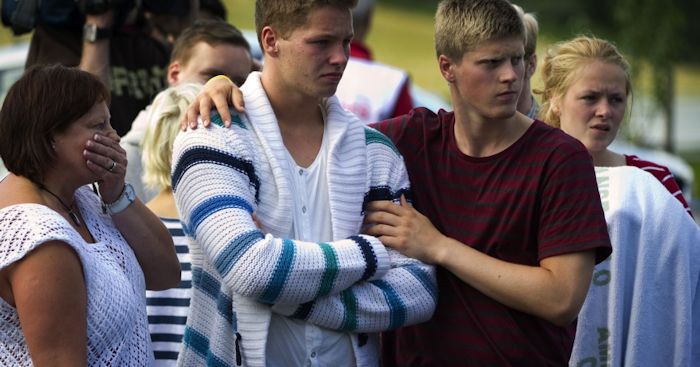Anders Breivik (Norway Massacre) Trial
Anders Breivik (Norway Massacre) Trial (2012)
by Douglas O. Linder (2020)

The Famous Trials website includes 90 trials, but none, with the possible exception of the Nuremberg trials, produced more heart-wrenching testimony that the trial of Anders Breivik. The crimes for which Breivik stood trial took 77 lives and left dozens more with permanent and life-altering injuries. But it is who most of those victims were—bright and promising teenagers in one most beautiful, well-managed, and safest countries on the planet—that makes the Breivik trial such a difficult one to write and read about. Why Anders Breivik did what he did that summer’s day on an idyllic island near Oslo needs to be understood—understood so it might never happen again.
The Breivik trial also provides an interesting study in contrasts with the American criminal justice system. Readers more familiar with the adversary system used in criminal cases in the United States will be surprised to read about the Norwegian practice of opening trials with the prosecutor shaking hands with the defendant; or the practice of having guilt or innocence is decided by a group of five judges (two professional judges and three lay judges); or a case in which the defendant is allowed to read (largely without interruption) a lengthy speech explaining the political motivation for his crime; or a case in which the last word in the trial is given not to attorneys, but to a young victim; or a case in which the prosecutor, and not a defense attorney, presents evidence that the defendant is not legally responsible for his actions and should receive treatment instead of a prison term. The trial of Anders Breivik produced a lot of head-scratching among the world’s journalists who covered the trial. You, too, may find yourself shaking yours.
Background

Breivik in the suit he wore while mixing hazardous chemicals
By a red barn in forested land along the Glomma River in Norway, in mid-May of 2011, a thirty-two year old man wearing yellow rubber gloves, a respirator mask, and a protective suit, boiled sulfuric acid on a hot plate. His goal was to increase the concentration of 30 liters of acid from 30% to 90%. The man, Anders Behring Breivik, was working to build a powerful explosive that he hoped would shock Norway to its senses. That would be a sort of opening salvo in a war to prevent the destruction of European culture from Islamic immigration.
Nine years earlier, by his own account in his personal log, Breivik concluded, “I have lost faith in the democratic struggle to save Europe from Islamification.” “Armed struggle,” he decided, “was the only way forward.” By 2005, Breivik was working to build a capital base to fund what he called “a martyrdom operation.” By the next year, he had started writing a compendium he called “The European Declaration of Independence 2018” which provided a political justification for terrorism and outlined his own plan to save Europe from the threat of Sharia Law. The work identified categories of “traitors” in Norway who supported multiculturalism, people who would effectively become Breivik’s “enemies list.” The list included everyone from government officials (especially members of the Labor Party) to professors to journalists.
In autumn of 2009, Breivik entered what he called “a phase shift” in his “project.” He began researching how to build high powered explosives, as well as plotting how to acquire the necessary chemicals for construction. He soon realized that building a bomb could not be easily accomplished in Oslo, especially in the home of his mother where he lived at the time. He began looking for isolated farmland within a few hours’ drive of the capital. He also started attending classes at the Oslo Pistol Club and playing the computer game Call of Duty, which he believed sharpened his shooting skills. In February of 2011, submitted his application to purchase a semi-automatic Glock 17....Continued

